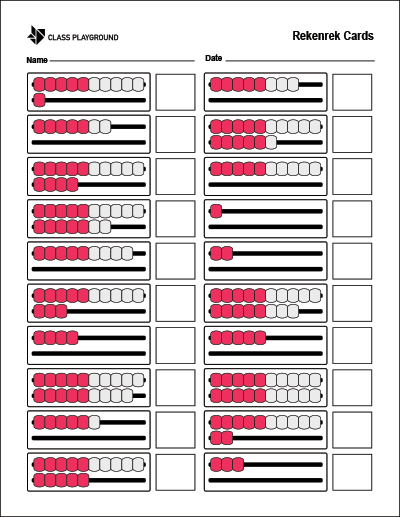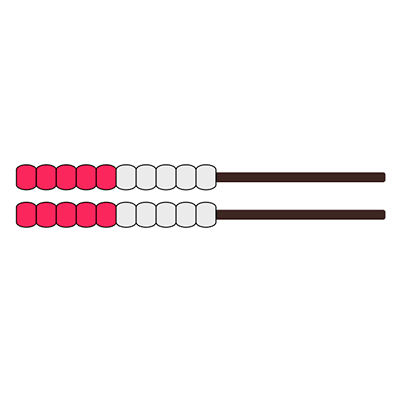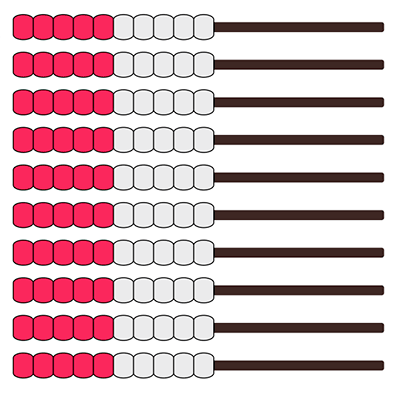What is a Rekenrek?
A rekenrek is a simple bead frame that helps elementary students build number sense and fluency. It has two rows of ten beads (grouped 5-and-5 by color), so children can see amounts, make quick estimates, and model operations. The term comes from Dutch and literally means “counting frame.”
Benefits for Students
- Clear visuals: Moving beads makes abstract quantities concrete and easy to compare.
- Counting fluency: Practice counting forward and backward, and skip-counting by 2s, 5s, and 10s.
- Subitizing: The 5-and-5 color grouping supports instant recognition of small quantities.
- Operations sense: Students see how numbers compose and decompose, laying groundwork for addition and subtraction.
- Engagement: The hands-on nature invites exploration, talk, and reasoning.
Teaching Strategies
- Counting routines: Start with quick daily warm-ups: show 7, hide it, then ask “How did you see it?” (e.g., 5 and 2).
- Subitize & explain: Flash a configuration and have students justify their thinking (“I saw 5 and 3 more”).
- Number bonds: Build multiple ways to make a target (e.g., 10 as 6+4, 7+3, 8+2) to strengthen part–whole understanding.
- Model equations: Use the rekenrek to act out 6 + 4, 9 – 3, or “make 12 in two moves,” highlighting efficient strategies.
- Think-alouds: Verbalize moves (“I slide 5 at once, then 2 more”) to model strategic counting and grouping.
Classroom Activities
- Missing beads: Show a quantity briefly, slide some back, and ask, “How many are hidden?”
- Pattern builder: Create repeating or growing patterns across the rows; students predict the next step and explain the rule.
- Fact families: Pick a total (e.g., 8) and generate all related addition and subtraction facts using bead moves.
- Compare & justify: Build two numbers (e.g., 8 and 6). Students decide which is greater and explain “how much more.”
- Interactive practice: Try the digital Toy Theater rekenrek for whole-class modeling or centers alongside physical frames.
Conclusion
Used daily and with purpose, the rekenrek bridges concrete action to mental strategies. By combining quick routines, rich talk, and targeted practice, students gain confidence with quantities and operations that carries into written methods and broader problem solving.



